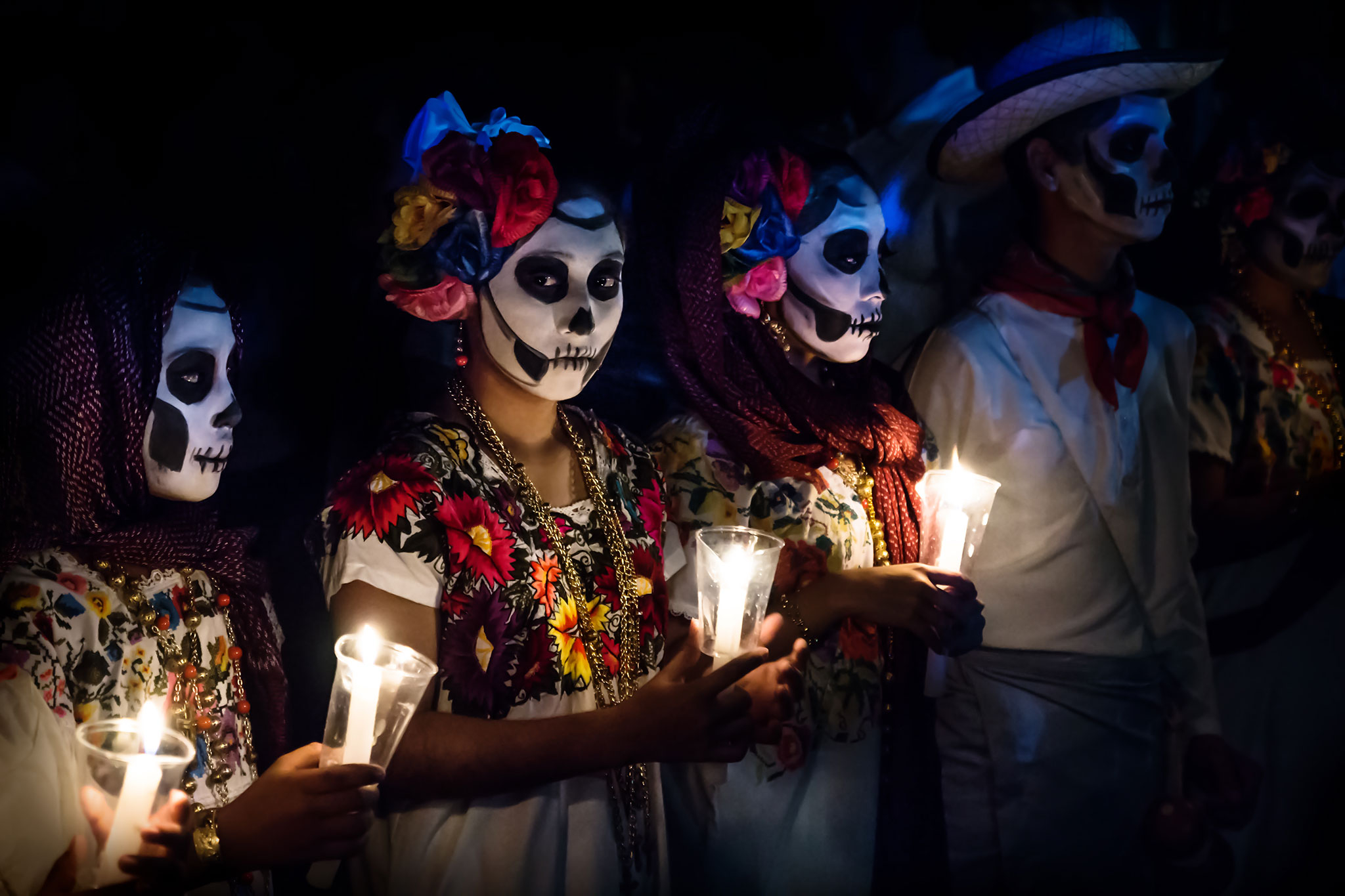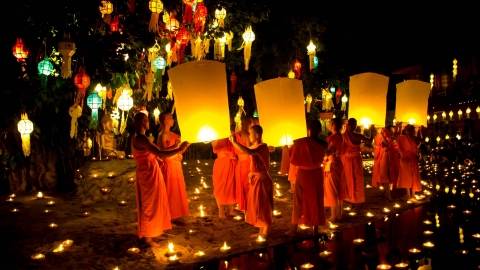Day of the Dead
It is an annual celebration held in Mexico on the first two days of November. This is an occasion for families to remember their deceased loved ones with special customs and colorful activities. Once considered spooky and horrifying by the Spanish, today, Day of the Dead has been recognized by UNESCO as an Intangible Cultural Heritage of Humanity.
One thing everyone should know: Day of the Dead is not the Mexican version of Halloween. While Halloween is a dark night of ghosts, Day of the Dead is full of color and joy, an occasion to show love and respect for deceased family members. When November comes every year, from urban to rural areas in Mexico, everyone joins in the fun with fancy makeup and colorful clothes on. They hold parades and parties, sing and dance, make offerings to their deceased loved ones and remember them in many joyful, even sweet ways. Despite the creepy name, the atmosphere of this festival is very happy, warm and full of family.
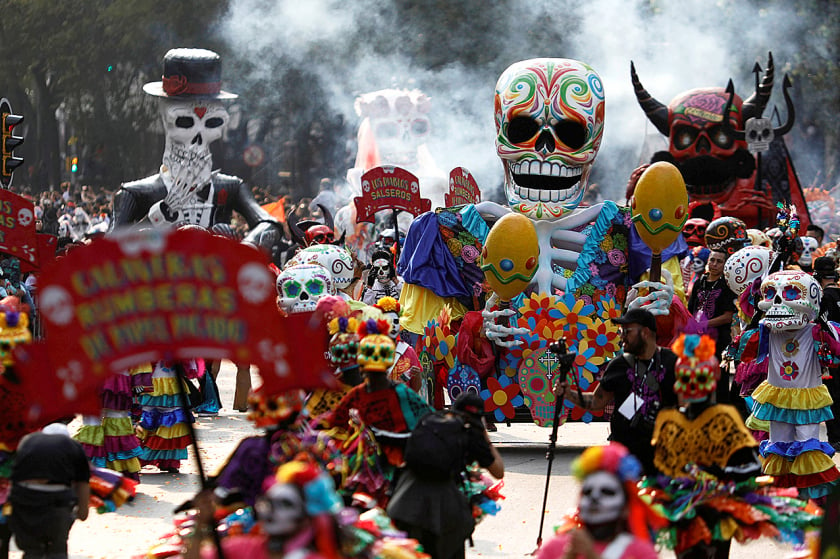
Photo: Edgard Garrido/Getty Images
The Day of the Dead was first known more than 500 years ago, when the Spaniards came to Mexico to colonize this place, and were surprised to see the natives performing a "ghostly" ritual with strange skulls. Initially, the Spaniards tried many ways to eliminate this custom that has lasted for at least 3,000 years, however this festival still exists to this day and has an official nameDay of the Dead.
Día de Muertos is a traditional Mexican festival to honor the dead, originating from the Aztec, Toltect and Nahuas, who considered death to be just a phase in the infinite continuum of life. The deceased are still a member of the community, they still live in the memories of those left behind. The Day of the Dead is the day they temporarily return to the human world to visit their loved ones on earth.
Mexicans believe that the body is temporary, but the soul is eternal. After the soul leaves the body, it gathers in an eternal place to rest and wait for the day when it can return to visit its loved ones. For them, life is just a dream and death is a continuation, so instead of fearing death, people accept it as a natural thing. This is a completely opposite view to the Spanish (and most of us) who see death as the end of life.

Photo: Miguel Tovar/Getty Images
Día de os Muertos was originally celebrated in the summer, but the Spanish moved the festival to November 2 to align with All Saints' Day in Catholicism, and incorporated pre-Hispanic religious practices. Today, Day of the Dead takes place on November 1 and 2, close to the fall corn harvest.
According to indigenous beliefs, on the night of October 31, the door connecting the two worlds will be opened, the souls of children will return to meet their families on November 1, and November 2 is the time for deceased adults. Therefore, November 1 also has its own name.Day of the Angels(Day of the Little Angels). In 2008, UNESCO recognized Día de os Muertos as an Intangible Cultural Heritage of Humanity.

The Sumpango region of Guatemala celebrates Día de los Muertos with a giant kite festival. Some kites are over 18m high (Photo: Luy Brown/Getty Images)

In Bolivia, offerings to the spirits include coca leaves, llama meat and chicha – a drink made from fermented corn (Photo: Juan Karita, AP)
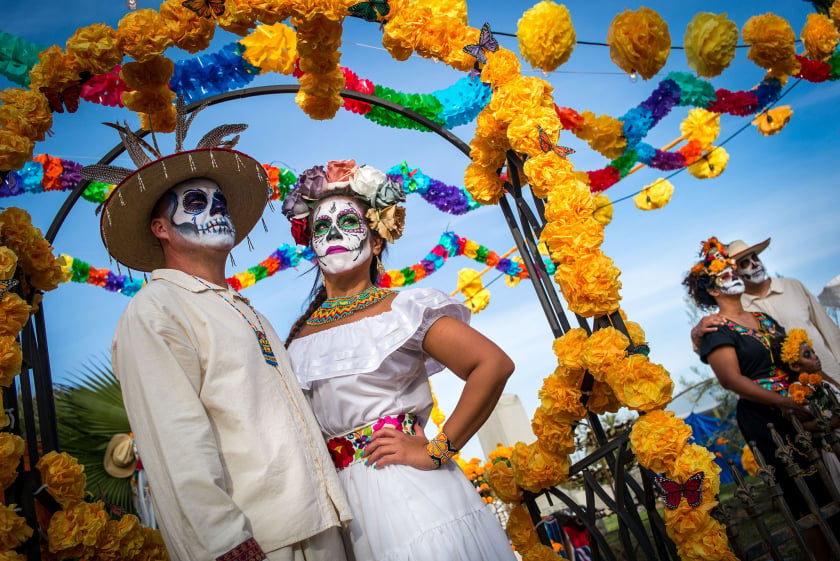
Hollywood Forever Cemetery in Los Angeles, USA is one of the largest Day of the Dead venues outside of Mexico (Photo: Dotan Saguy)
In families, the place that most clearly represents the identity of this celebration is the prayer altar, also known asOfrenda. Especially in the inner cities of Mexico, Ofrenda will be placed in the house, decorated with traditional food and drinks, family photos and candles, as an act of welcoming the spirits to visit.
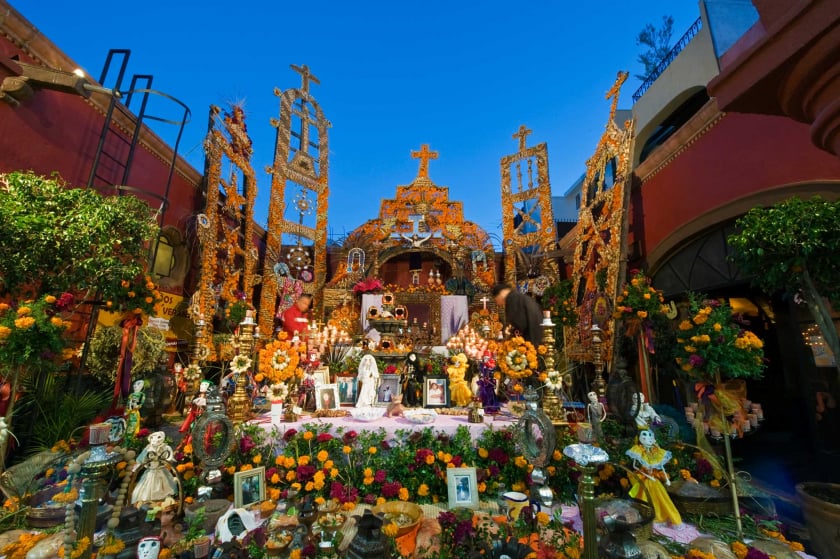
Photo: Rob Tilley, Corbis NX/Getty Images
In Aztec tradition, marigolds were used to heal those struck by lightning and to protect travelers crossing rivers. In rural Mexico, people visit cemeteries and fill the graves of loved ones with bright yellow marigolds, scattering petals around them to guide the souls from the altar back to their final resting place. They place toys for the children who have passed away, and tequila for the souls of the adults. Then, the whole family sits around the graves, eating the deceased’s favorite foods while chatting or praying. Día de los Muertos reminds the living that our connection to those who have passed away is always there. After all,todos somos calaveras- we are all skeletons.
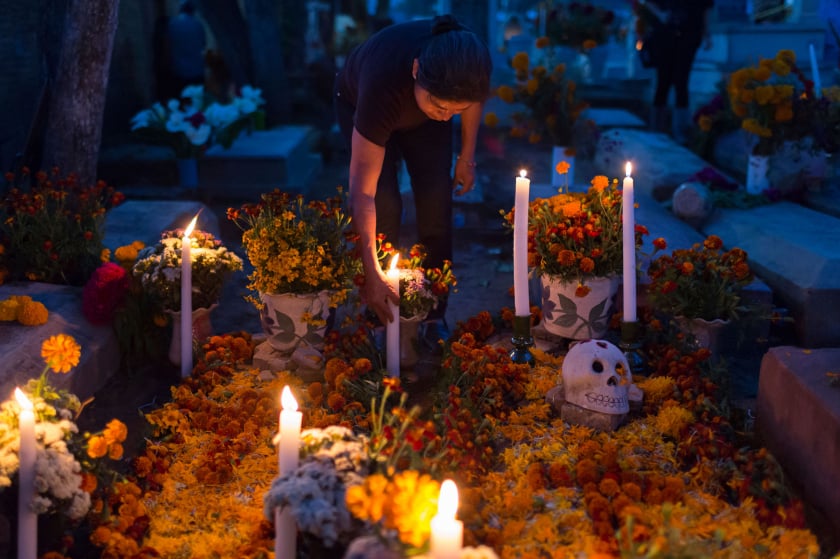
Photo: Nacho Calonge

Photo: David Naddrie/Getty Images
During Day of the Dead, people flock to the streets and public squares day and night. People of all ages paint their faces like skulls, and wear colorful capes and coats to imitate La Calavera Catrina, a zinc engraving created by Mexican cartoonist José Guadalupe Posada between 1910 and 1913. The work originally represented death in lavish French garb, created as a commentary on Mexican society's imitation of European culture. Later, artist Diego Rivera breathed life into Posada's work, calling it a woman named Catrina (slang for "rich"). Today, La Calavera Catrina has become the most popular symbol of Día de los Muertos, symbolizing death and rebirth.
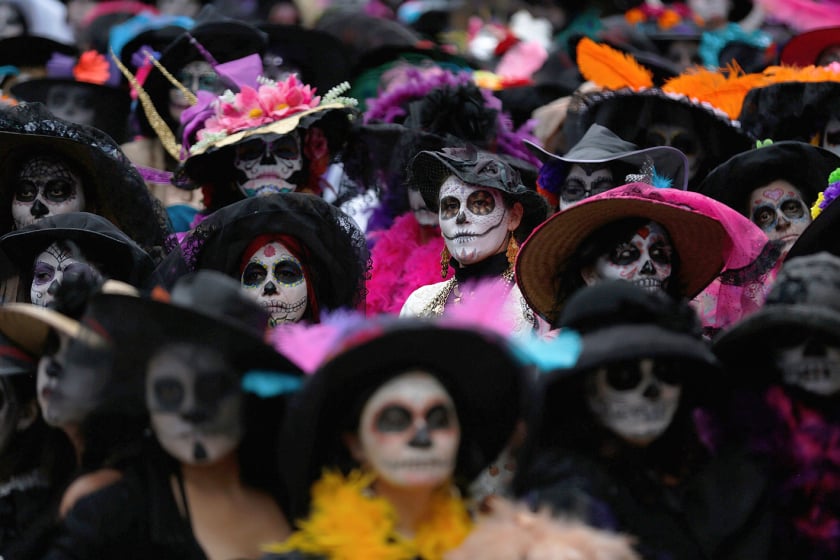
Photo: Tomas Bravo, Reuters
During the festival, people often hold parties and consider this an occasion for reunion. Popular foods are tequila, mezcal, hot chocolate and breads and candies shaped like skulls. One of the typical dishes is Calavera - colorful sugar skulls - a sponge cake that was very popular in the late 18th and early 19th centuries. Even on the forehead of each skull is attached the name of a person. In that way, people can make Calavera with the names of relatives, friends and enjoy the feeling of eating... the head of the dead. This is a very special custom, which is very well received by the people. In addition, Calavera are also patterns carved on stele with the meaning of satirizing life, they often appear in newspapers, on television programs or on the radio.
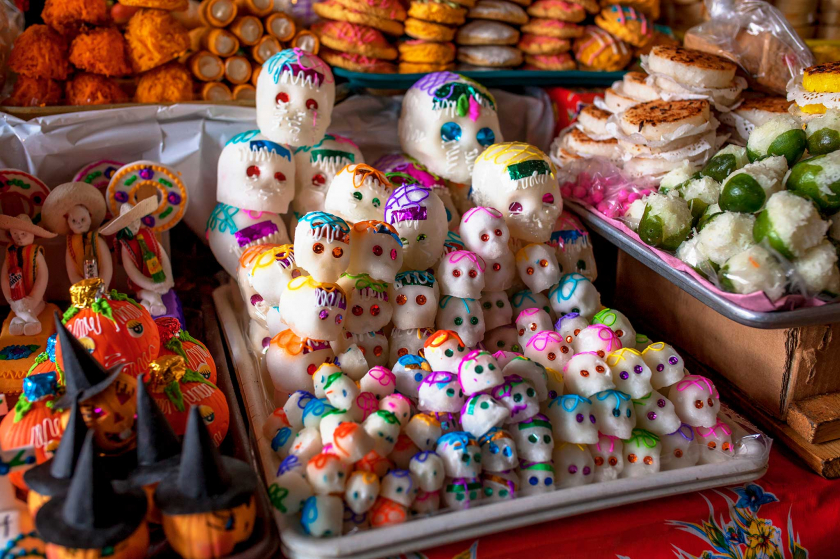
Photo: Fito Pardo
Pan de muerto, or bread of the dead, is also a sweet bread commonly found during Day of the Dead. It is round, symbolizing the cycle of life, topped with sugar or sesame seeds, and decorated with symbols of bones and skulls made from dough.
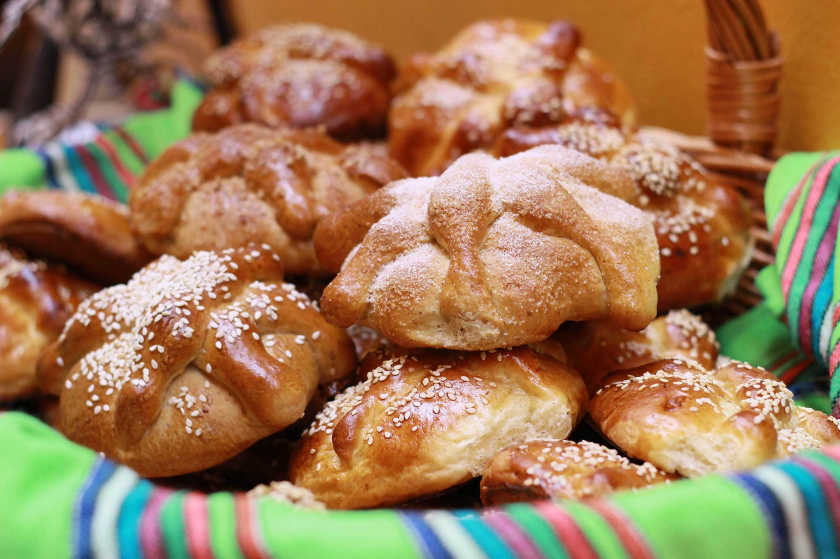
Photo: Alejandro Munoz
The Day of the Dead was originally a traditional Mexican culture, but today it is celebrated widely not only in Mexico, but also in Central American countries and some neighboring places. This typical custom has also appeared in famous animated films such asCocoandElena of Avalor.
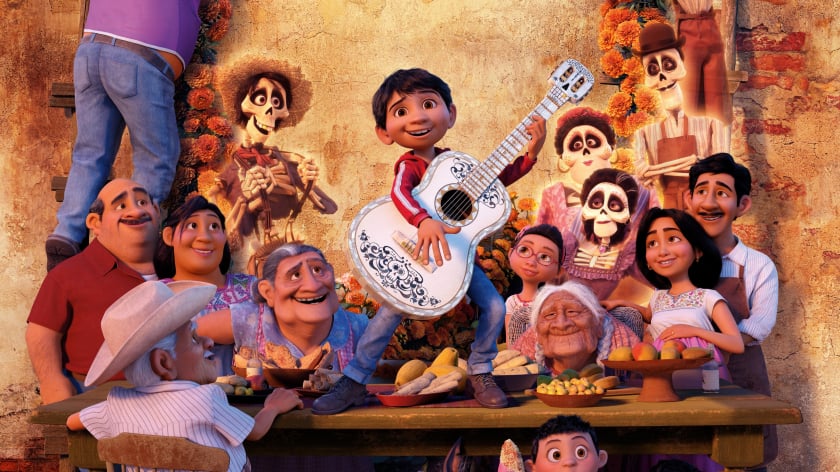
Pixar's famous animated film Coco - Photo: Internet
In Vietnamese folk beliefs, there is also a day of pardon for the dead, the day when the souls of the deceased return to the earthly world. Accordingly, on the full moon of the seventh lunar month every year, the gates of Hell open, granting amnesty to all prisoners in Hell the opportunity to be reborn in a peaceful realm.






